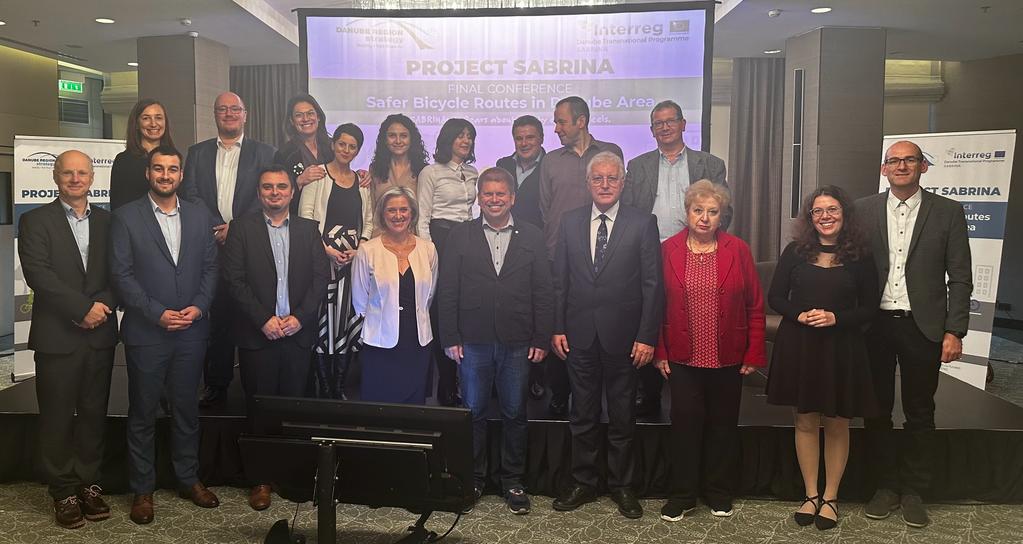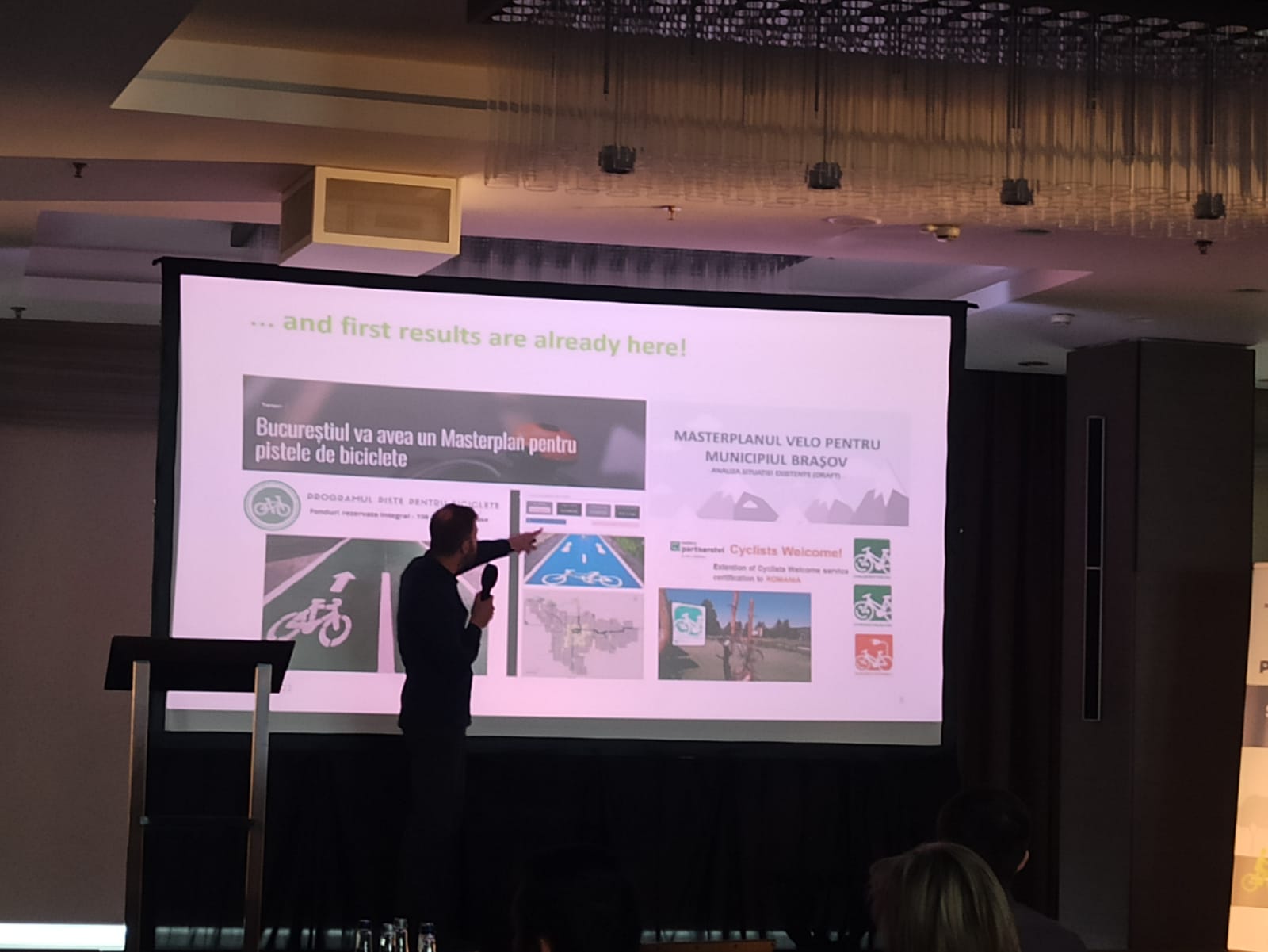Danube Cycle Plans - Cycling infrastructure safety - from policy and strategy to practice. A common approach promoted by SABRINA and Danube Cycle Plans projects
23-11-2022
The growing role of bicycles is a critical reminder of the need to improve infrastructure, making it safer, more forgiving, sustainable, and more comfortable. How to include cycling safety in the main strategies and how to improve safety for all road users in practice was discussed by around 50 participants at the final conference of the SABRINA project, which took place in Bucharest, Romania.

Photo: Green Revolution Association
The conference brought together cycling and road safety stakeholders to highlight SABRINA’s results and demonstrate the benefits of a systematic approach to safer cycling infrastructure. The conference contributed to the debate on the need to make cycling safe before making it more popular, and involved discussions on cycling safety investments and innovative cycling safety assessments like CycleRAP. In addition, the conference underlined the need to work towards the implementation of both the United Nations and European Commission road safety goals, with a particular focus on vulnerable road users.

Photo: Jitka Vrtalova, Partnership for Urban Mobility, Czechia
The SABRINA project was in line with priority 1B of the Danube Region Strategy (Improving Mobility and Multimodality - Road, Rail and Air Links) which was mentioned by Franc Žepič, the EUSDR PA1B coordinator and representative of the Slovenian Ministry of Infrastructure.
At this conference, the outputs of the Danube Cycle Plans (DCP) project were presented by Jitka Vrtalova from the Partnership for Urban Mobility and Ionut Maftei from Bike in Time. “To improve the safety of cyclists, we need strategic management. At the same time, the implementation of key transport strategies is not possible without including the topic of safety," said Jitka Vrtalová at the beginning of her presentation. She added that this is why the SABRINA and Danube Cycle Plans projects have been mutually supporting and cooperating throughout the 30 months of the project. In her speech, she pointed out the Danube Cycling Strategy which is a crucial document created jointly in the framework of both SABRINA and DCP projects.

Photo: Cristina Lixandroiu, INCDT
Ionut Maftei focused mainly on how the project has contributed to the development of cycling, awareness raising and supporting stakeholders in Romania. “We have realized that with the project outputs, we are ready for the future, and we can grab the chance to improve the conditions for cycling in Romania,” he explained the importance of the Danube Cycle Plans project for his country.

Photo: Cristina Lixandroiu, INCDT
The final conference was organized by Green Revolution Association and would not be possible without the support of the Lead Partner, the European Institute of Road Assessment – EuroRAP from Slovenia and all the SABRINA project partners.
„The future will not come on four wheels, I believe the future will be ready rather for two feet or for two wheels,“ concluded Raluca Fiser, the CEO of Green Revolution Association.

Photo: Jitka Vrtalova, Partnership for Urban Mobility, Czechia
See more:
